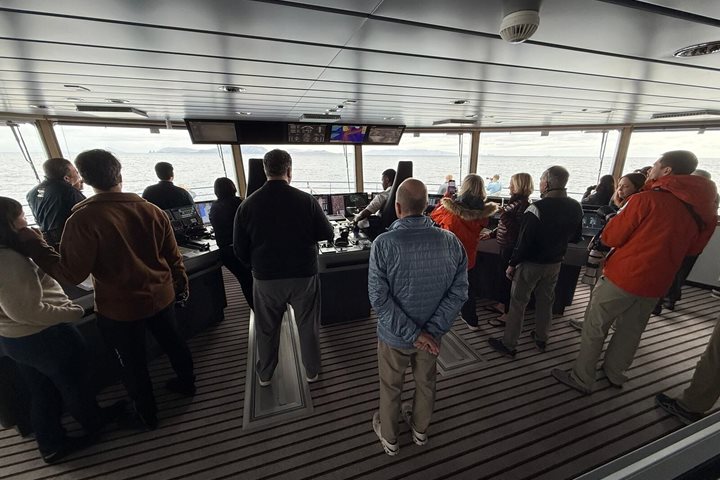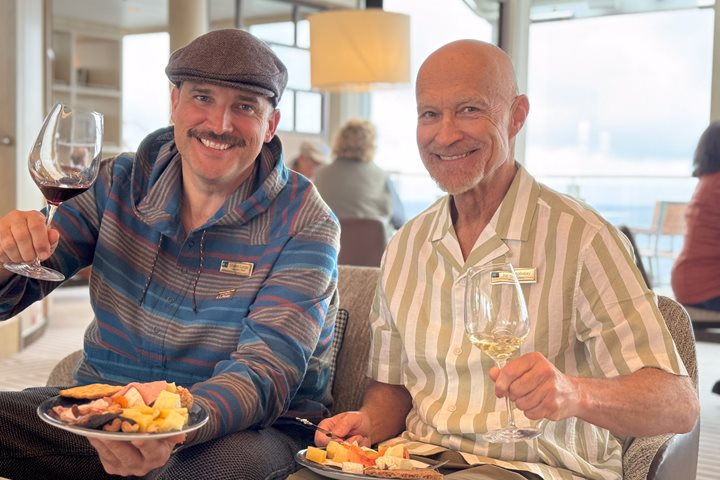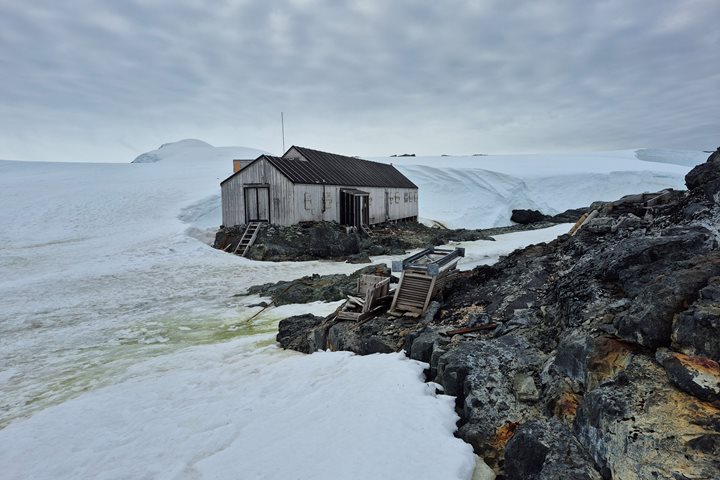The guests aboard the National Geographic Orion awoke with an excited announcement this morning from our expedition leader, Doug Gould. The ship was navigating the Lemaire Channel on the way north from our previous days’ location – south of the Antarctic Circle, and the staff had spotted something fantastic: killer whales! A loosely organized pod of Gerlache Strait killer whales, endemic to this area of the world and Antarctica, was hunting off the bow. The guests rushed to the bridge, the bow, and windows to get beautiful views of these incredible and rare subgroup of killer whale. The ship paused, held position, and followed the family for a while before she had to steam north for the next adventure on the day’s docket.
And on the ship went, north and more north, until she reached the morning’s destination. Port Lockroy is a historic Antarctic base, known as Base A. Not only has the building been refurbished into a well designed museum, there is also a gift shop! The most visited landing on the Antarctic Peninsula, Port Lockroy serves as the southernmost post office in the world, and welcomes between 13,000 and 18,000 tourists a year. When operational, Port Lockroy used to be a whaling station between 1911 and 1931, where whalers searched mostly for pelagic species such as blue whales and southern right whales. The evidence of these whaling efforts is still scattered both above water and below. On Jugla Point, adjacent to the post office, guests can view a reconstructed skeleton of a baleen whale, and the ship’s expedition dive team is always searching for new remains underwater.
As the shopping finished up and the last photos were snapped at Juegla Point and Port Lockroy, the National Geographic Orion must head ultimately north, back to Ushuaia. This morning concludes an absolutely fantastic journey on the peninsula, but it’s not over yet. Expedition staff and bridge officers keep a sharp eye out for wildlife as we head home – who knows what we will find next.









